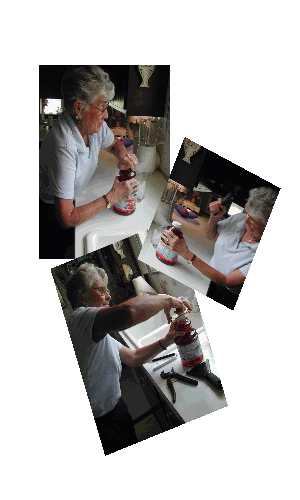(617)-479-3818
(617)-479-3818
(617)-479-3818
|
|
|
|
Essentially, ethnography is a set of qualitative, open-ended approaches that provide an in-depth study of subjects (consumers or customers) in their natural environment within context of a specific process, situation, occasion, product or service. It’s more than just another qualitative study. Ethnography and Story Telling Story telling is a powerful communication technique. It is our natural way we relay information to one another. It's also great tool for ethnography and for innovation. The ethnographer uses many techniques to gather the information. They then build the true story about the subject and the process they are studying. The story telling aspect of ethnography helps bring the data to life. That helps create a deep understanding about the topic of interest throughout the innovation team and their organization. Having a deeper understanding enables innovators to imagine better solutions in products and services as well as how to make the emotional connections that drives business success. Some of Innovare's ethnographic techniques: We typically use a combination of techniques and triangulate to truly describe "What's going on in the subjects world." This provides a comprehensive understanding regarding the topic of interest.
This is literally being the fly on the wall. For example, sitting in public elementary school classrooms in various regions and communities. Watching changes in the level of student engagement associated with different instructional approaches and materials. Or perhaps, observing a variety of metal workers and welders operating in differing application environments to uncover opportunities to enhance personal safety and work integrity. The key is to be open for the unexpected event, the unconscious behaviors that take place, the unintended consequences, and the natural work-arounds that subjects create to overcome problems in their environment.
To Innovare's Ethnographic Approach Overview
Highly open-ended interviews where the subjects tell of their experiences and stories while the interviewer listens for leads that create the needed insights to describe “what is going on here.” For example, when participants use expressions from the lexicon of their experience, such as “good days” and “bad days,” the interviewer asks for more detail. Perhaps a simple probing question. Tell me what a “good” day is like for you. This leaves the response open to the experiences and categories of the participant inviting the participant to frame and explore his or her own views of a good day.
To Innovare's Ethnographic Approach Overview
Photo Essays, Video, and Subject Diaries: Photography allows the researcher to provide visual examples that reinforce the subject’s story. This brings a high level of connectedness between the client team and the research findings. If a picture is worth a thousand words, consider the impact of bringing a video record of “a day in the subject’s life” into the innovation team, to senior management, or throughout your marketing and sales teams. It strengthens organizational understanding about the consumer's or your customer's experiences, perceptions, values and needs. Video ethnography adds another dimension to the research. It is a highly efficient discovery and communication device and a key tool for the ethnographic researcher. What could be more direct than having the subject capture their story? At times we have subjects create their own record such as through pre-interview assignments. Before the interview we provide the subject with a camera or a diary. They are instructed to capture what they find important regarding the topics of interest. They keep an on-going log of their experiences and impressions for a period of time. This technique provides a rich set of data useful to stimulate thoughtful discussion during subsequent depth interviews.
To Innovare's Ethnographic Approach Overview
©2001- 2011 Innovare, Inc. All rights reserved.
Innovare and Vocal Insights are registered trademarks of Innovare, Inc. |

